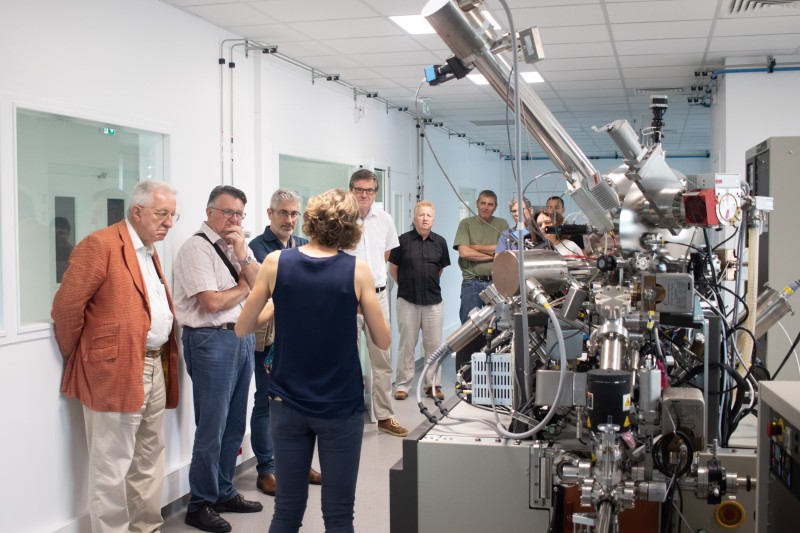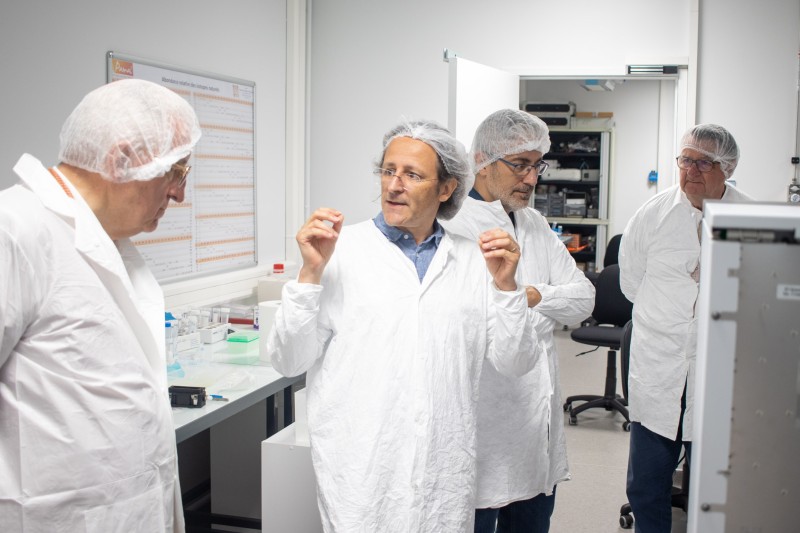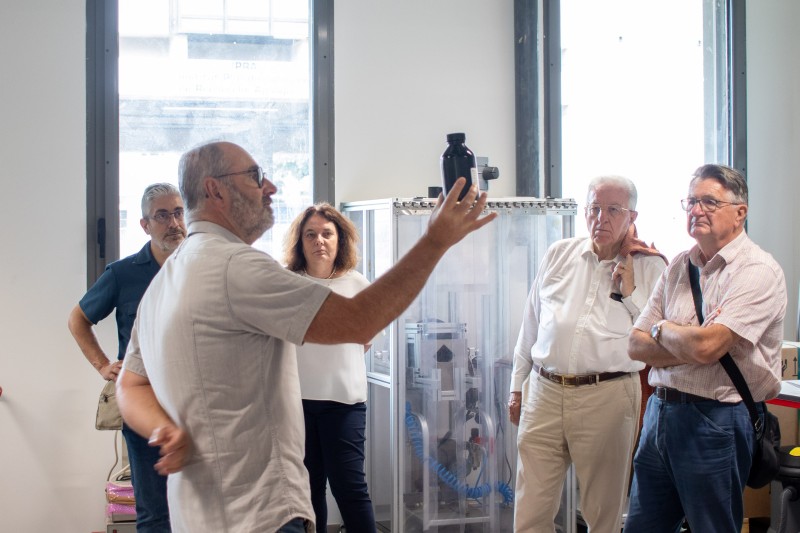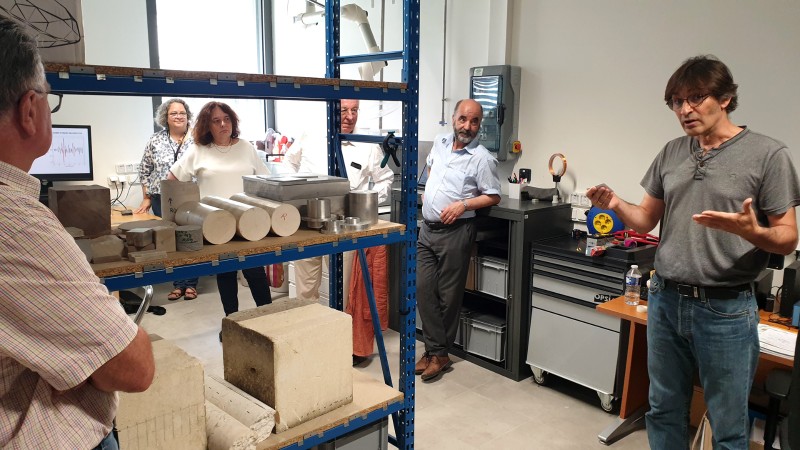09 | 12 | 2023
Representatives of the Greater Pau Authority (Communauté d’agglomération) visit two new UPPA buildings
On July 11, 2023, several members of the Communauté d'agglomération Pau Béarn Pyrénées (CAPBP) visited UPPA's research facilities in the new IPREM II and IPRA II buildings on the Pau campus, the construction of which was partly financed by the CAPBP*. They were given a glimpse of the excellence and diversity of the work carried out by the university's researchers and teacher-researchers.
Isabelle Baraille, UPPA's vice-president in charge of research, began by outlining the university's strategy and presenting its new scientific identity, based on 5 interdisciplinary missions focused on major societal challenges, as well as its latest successes in the France 2030 Investment call for projects.
The group was then guided through the new IPREM II building by Ryszard Lobinski, Director of the Institute of Analytical Sciences and Physical Chemistry for the Environment and Materials (IPREM). This building has been designed to house the Equipex MARSS speciation and isotope mass spectrometry center of excellence on the same floor: ToF-SIMS Tandem MS and nano-SIMS, high-resolution multi-collectors with femtosecond lasers, etc., but also to benefit from experimentation rooms requiring a high level of performance to overcome various limitations (temperature, dust, vibrations or electromagnetic waves).
These devices, some of which are virtually unique in Europe, are used for research in a wide variety of fields: solid-electrolyte batteries, anti-corrosion coatings; nanoparticles in human lung cells, arsenic in algae, absorption of trace elements by poultry, pig and ruminant farms; diagnosis of Lyme disease, archaeology (non-destructive dating of snail shells or aurochs' teeth), monitoring the migration of emblematic fish, such as salmon or eels, detection of radioactive elements in the air...
Just a few hundred meters away, Peter Moonen, Director of the Institut pluridisciplinaire de recherche appliquée (IPRA)** , and Jean-Paul Callot, Director of the Laboratoire des fluides complexes et leurs réservoirs (LFCR), took over for the tour of the IPRA II building. The building now houses the Pau-based teams from the LFCR and the Sciences pour l'ingénieur appliquées à la mécanique et au génie électrique (SIAME) laboratories, as well as the Laboratoire de mathématiques et de leurs applications de Pau (LMAP).
Hosted in three newly installed experimental rooms, the representatives were able to discover the benefits of optical microscopy, a patented quartz resonator and experimental imaging methods related to underground exploration. They were also able to enter the huge Faraday cage designed to study the phenomenon of lightning in the laboratory.
The matinee concluded with a presentation of the activities of the Identités, Territoires, Expressions, Mobilités (ITEM) and Transitions énergétiques et environnementales (TREE) research units.
The former is made up of specialists from various fields of history, art history, archaeology, anthropology and Spanish civilization, and works in particular on the inscription of human and cultural activities and migrations in space, on identities, heritages and corpora, and on transitions and discrimination.
The latter brings together researchers from the fields of geography, sociology, law and economics, with the aim of analyzing the challenges, obstacles and levers for implementing energy and environmental transitions, working on technological innovations, economic and fiscal incentives, and territorial initiatives in favor of transitions.
* The construction of the two buildings was co-financed by the European Regional Development Fund (ERDF) (1.5 million euros for the first one and 4 million euros for the second one), the Région Nouvelle-Aquitaine and the Communauté d'agglomération Pau Béarn Pyrénées.
** IPRA is a federation of four research laboratories and the DMEX X-ray imaging center, with a staff of around 310 (300 for IPREM).






